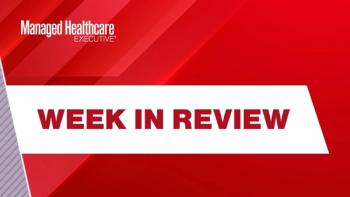
Some Older Adults Are in Need of Additional Financial Service
Half of single adults 65 and older who live alone and those living in two-person households are unable to afford basic necessities without extra assistance.
Half of single, older adults 65 years and older in the United States, who live alone, and nearly a quarter of those living in two-person households are unable to afford basic necessities without extra assistance, according to information found by researchers tracking the economic security of America’s older adults.
The 2019 Elder Index and companion report, Insecurity in the States 2019, calculates the elder economic “insecurity rate” both nationally and on a state-by-state basis, according to a report.
The new index data and report were produced by the Gerontology Institute at the University of Massachusetts Boston’s McCormack Graduate School.
Among other states, Massachusetts leads the nation with the highest level of elder economic insecurity for older adults living alone. Seven of the top 10 states in the economic insecurity category, including New York and New Jersey, were located in the Northeast. They were joined by Mississippi, Louisiana, and California, the report said.
Related:
The index estimates the cost to adults 65 years and older for basics such as food, housing, health care, and transportation in every county in the United States. Researchers match income data with the index results to determine state and national rates of elder economic insecurity.
On average, 18.2% of older adults in the United States living alone have income below the Federal Poverty Level. Another 32.1% live “in the gap,” with income exceeding the poverty line, but falling short of covering their actual cost of living.
“Making ends meet is a daily challenge for many older adults, especially those who live alone,” says Jan Mutchler, director of the Gerontology Institute’s Center for Social and Demographic Research on Aging. “The elder index provides an important reality check-a realistic measure of the actual cost of a no-frills lifestyle for elders living independently.”
Additional findings in the Insecurity in the States 2019 report include:
- National averages suggest 50% of older adults living alone and 23% of elder couples have annual incomes below the Elder Index.
- Nationwide, 32% of single elders and 18% of elder couples fall into the gap between Federal Poverty Level and the income required for realistic economic security.
- At least 40% of adults 65 years or older in every state are at risk of being unable to afford basic needs and age in their own homes.
- More than half of older adults living below the Elder Index rely on Social Security for at least 90% of their incomes.
“A large portion of every state’s independent older adults lack incomes that would allow them to escape the threat of poverty, to remain independent and to age in their own homes,” says Mutchler. “Protecting Social Security benefits is essential for older adults, including not only those who are poor but also for those ‘in the gap.’”
The elder index calculated the national average annual cost of living of $25,416 for renting elder singles and $36,204 for older couples who rent. The 2019 federal poverty guidelines for the 48 contiguous states are $12,490 per year for singles and $16,910 annually for couples, the report says.
Within individual states, the percentage of single older adults living below Federal Poverty Level ranged from 12.8% in New Hampshire to 25.8% in Mississippi. The percentage of older adults living alone in the gap ranged from 41.1% in Nevada to 61.1% in Massachusetts.
Overall, the state with the lowest Elder Economic Insecurity Rate was Nevada, followed by Alaska and Utah. Complete state rankings and other details are available in the Insecurity in the States 2019 report.
Newsletter
Get the latest industry news, event updates, and more from Managed healthcare Executive.

















































